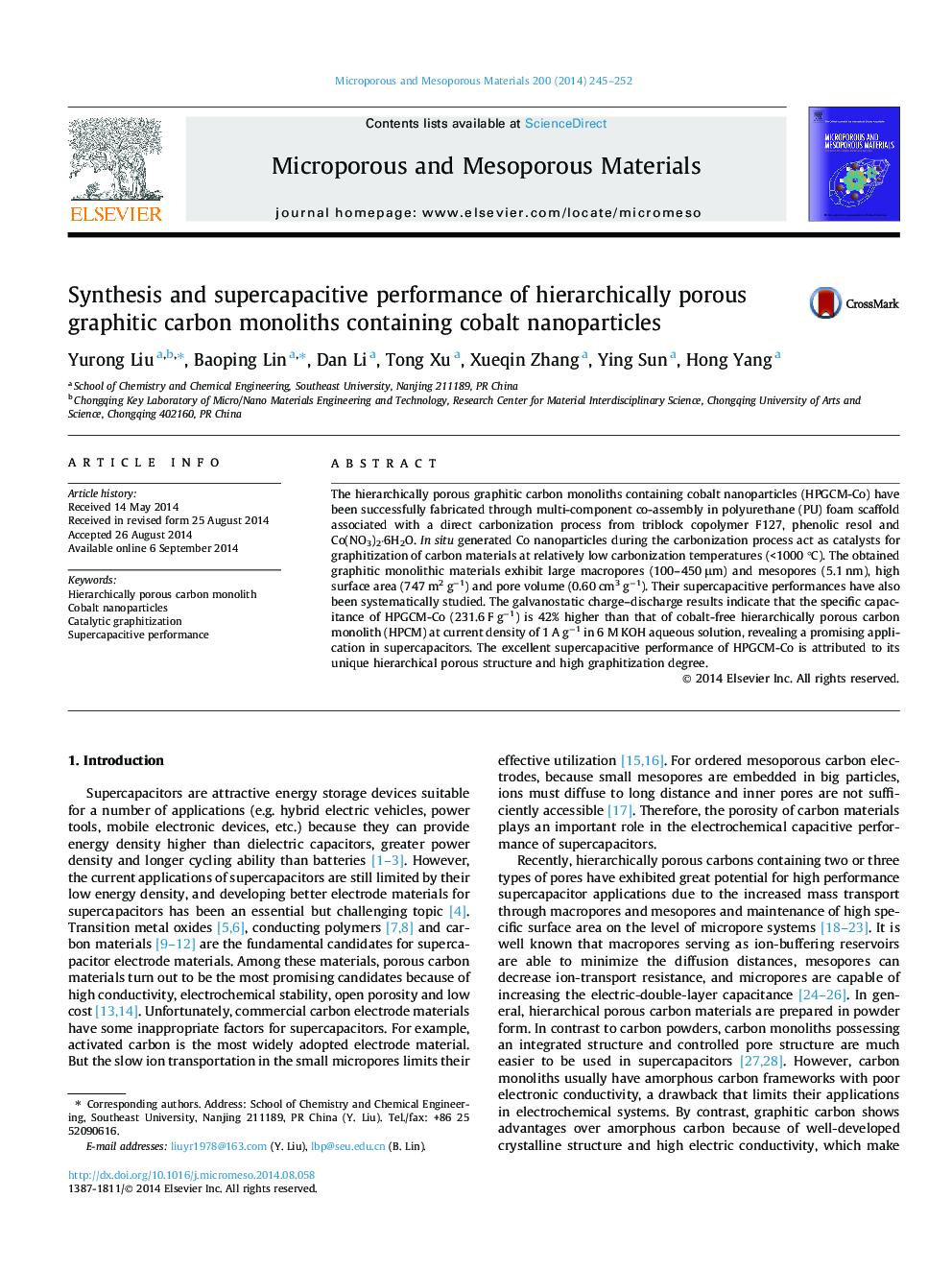| Article ID | Journal | Published Year | Pages | File Type |
|---|---|---|---|---|
| 72708 | Microporous and Mesoporous Materials | 2014 | 8 Pages |
•Hierarchically porous graphitic carbon monoliths containing cobalt are synthesized.•PU foam is used as macroporous scaffold.•The carbon monolith containing cobalt possesses good supercapacitive properties.
The hierarchically porous graphitic carbon monoliths containing cobalt nanoparticles (HPGCM-Co) have been successfully fabricated through multi-component co-assembly in polyurethane (PU) foam scaffold associated with a direct carbonization process from triblock copolymer F127, phenolic resol and Co(NO3)2·6H2O. In situ generated Co nanoparticles during the carbonization process act as catalysts for graphitization of carbon materials at relatively low carbonization temperatures (<1000 °C). The obtained graphitic monolithic materials exhibit large macropores (100–450 μm) and mesopores (5.1 nm), high surface area (747 m2 g−1) and pore volume (0.60 cm3 g−1). Their supercapacitive performances have also been systematically studied. The galvanostatic charge–discharge results indicate that the specific capacitance of HPGCM-Co (231.6 F g−1) is 42% higher than that of cobalt-free hierarchically porous carbon monolith (HPCM) at current density of 1 A g−1 in 6 M KOH aqueous solution, revealing a promising application in supercapacitors. The excellent supercapacitive performance of HPGCM-Co is attributed to its unique hierarchical porous structure and high graphitization degree.
Graphical abstractFigure optionsDownload full-size imageDownload as PowerPoint slide
